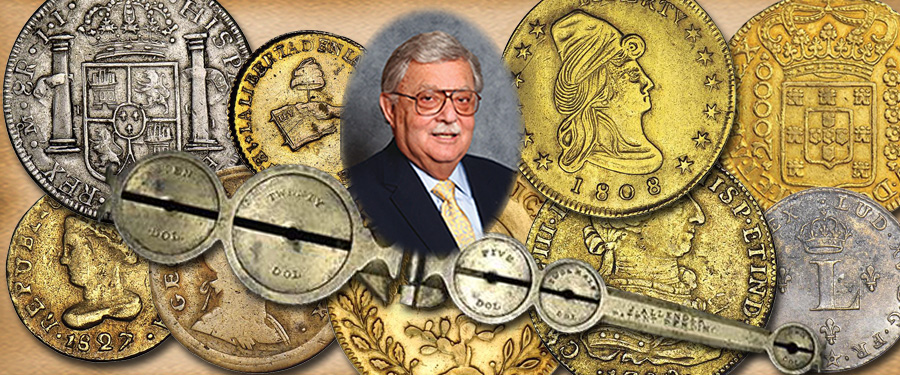
Counterfeiting, or making something false, has occurred since goods were exchanged for services or other items. If a bag that was supposed to contain wheat, instead was full of another grain or even sand, that was counterfeiting or misrepresenting a product.
Since coinage was first struck in Lydia in the 8th century B.C., coins that were made by the legal entity of the region were imitated and thereby falsified. Gold or silver coins were sometimes copied, imitated, cast or struck by those who would try to pass them off as the real thing in order to make a profit.
Lead or other metal might be used as the core of the coin, with a coating or plating of precious metal on the surfaces to make it appear as the “real thing.” Sometimes counterfeiters skillfully debase real metal with alloys that let them realize a profit. The true metallic value of a coin was watered down, but it could still be offered for exchange at the same rate as a true coin. Whether it was during the Ancient period, Medieval times, or even in modern days, there has always been someone willing to make and pass coins that are not the product of a legal issuing mint.
In ancient times a blend called Electrum was used to fulfill the prescribed weight of a coin, making it usable yet not as valuable as it was to be before the blending. It would have the design of the original and appear as if it had the full value of gold, yet the debasement was done even as the value of the gold in this case, had risen due to inflationary causes. So the counterfeiter, especially in earlier days was able to make his fortune by diluting the coins in use. The work in many cases was skillfully done, and these coins could be readily exchanged for goods and services and not detected by people who were uneducated or unaware. This practice and others have allowed counterfeiters to flourish over time, in all the centuries that coins were used for payment or as a store of wealth.
Unknowingly, many coin collections came to be assembled with counterfeit coins included. Precious metal coins were of limited availability and were especially desired by noble and wealthy people who wanted to collect them. The supplier, banker or dealer might need additional specimens to sell and so he would buy counterfeit coins or even arrange for them to be made by clever artisans. These could then be sold to the nobility, including kings, princes, lords and their ladies, who collected them as an important part of their wealth. Many counterfeits were cast, others actually struck, even with the correct designs denoting what they were, but as these were not struck by a Mint or issuing authority, were false and deceptive, created to pass as real items among those who didn’t know any better.
In upcoming articles I will give some more recent examples of counterfeiting and discuss how it has affected the coin hobby during my lifetime.





